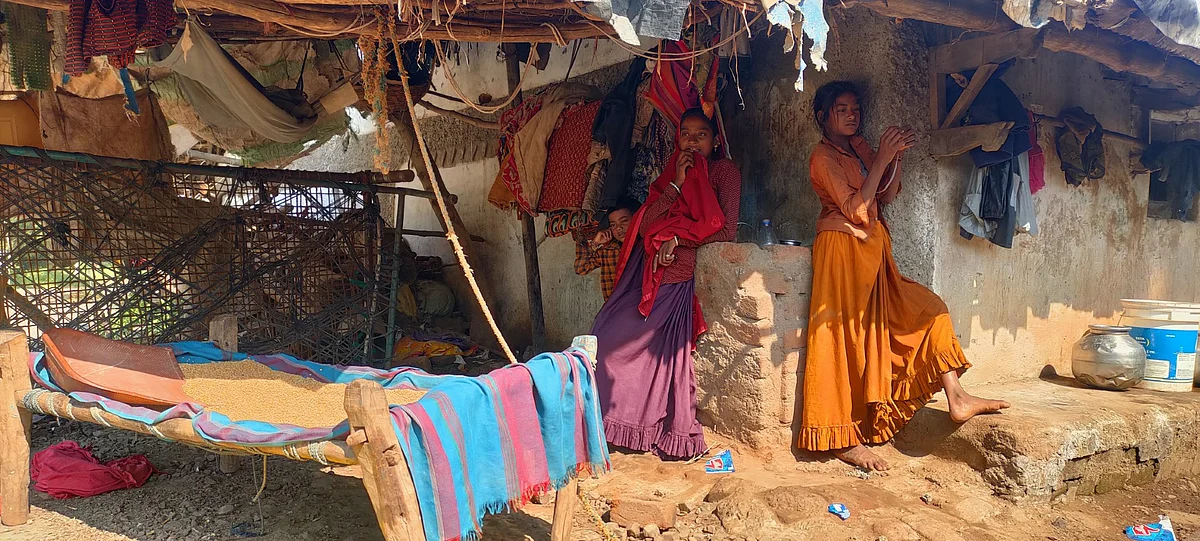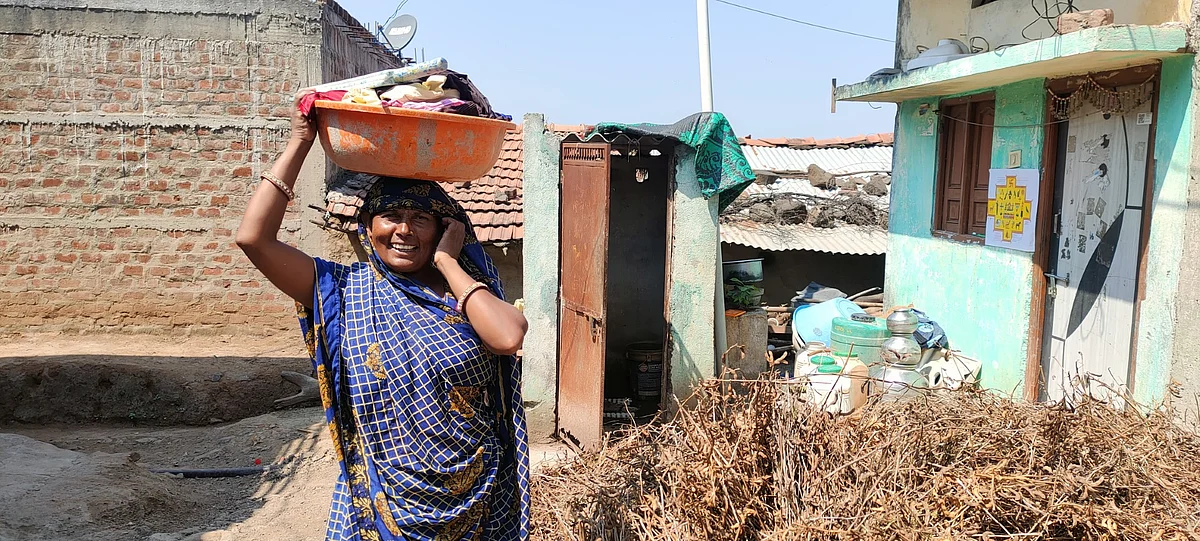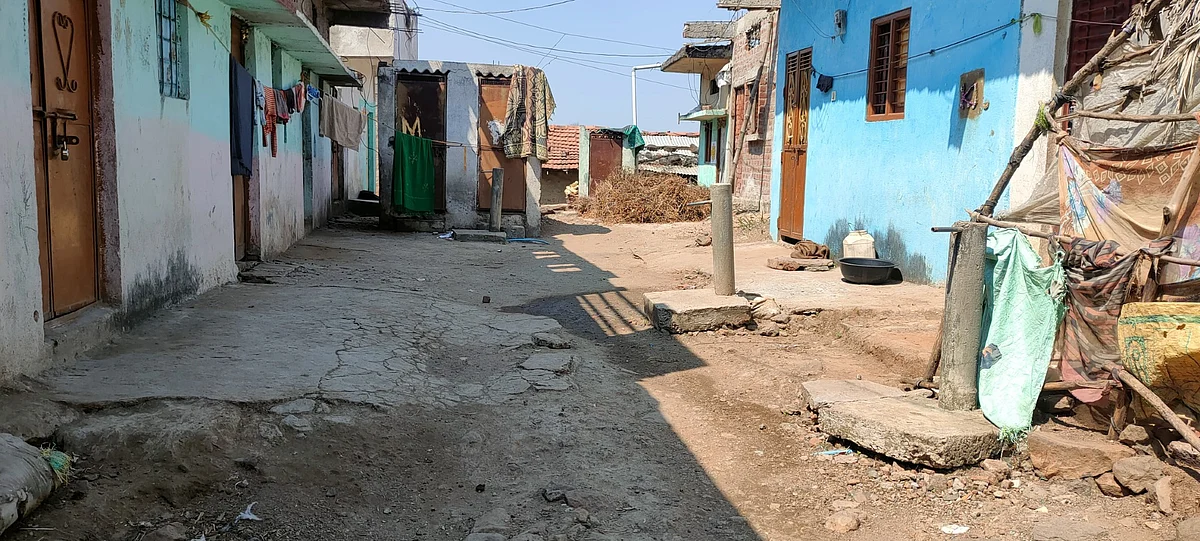Madhya Pradesh polls: Water scarcity and corruption ruptures Swachh Bharat Mission–Gramin
Despite Swachh Bharat Mission's 'success', MP's tribal hamlets struggle with open defecation due to dysfunctional toilets, water scarcity and corruption challenges

As you enter the tribal hamlets of Madhya Pradesh, one can see the ruins of toilets constructed under the ambitious Clean India Mission — aka Swachh Bharat Mission–Gramin (SBM-G) — in the last eight years. These individual household latrines (IHHLs) were constructed after the government of India launched the scheme country-wide on 2 October 2014 with an aim to eliminate open defecation and attain cleanliness.
One can notice, a bulk of toilets didn't have gates and many without a septic pit. Those have both are dysfunctional because of inaccessibility of clean water to the families.
Now, these toilets were used as either storage [grains or tendu patta], for sheltering animals or were deserted by the families. Men of these villages can be spotted with a plastic bottle or a steel lota [a kind of mug] filled with water at dawn. Unlike men, women go for open defecation in small groups mostly after dusk or before dawn risking their security.
It's happening when Madhya Pradesh attains a badge of open defecation plus free since 2018. According to the official website, over 72 lakh toilets have been constructed under the SBM–G by 2022 in 50, 279 villages of the state. Of those, 49,994 villages were declared ODF-free Plus.
The tribals accounted for 22 % of the state’s population and the condition of toilets in 89 tribal blocks are no different.
The union government pats its back for building 10.9 crore toilets spending Rs 83,937.72 core in the past eight years emphasizing their commitment towards cleanliness and easy access to toilets. But a research paper prepared by the World Bank and a faculty of Economics at Yale University over the progress of SBM - G showed a massive decline in use of toilets after 2018-19 among Scheduled Caste and Scheduled Tribe socio-economic groups.
The research paper outlined, 'While regular use of toilets declined for all groups, the decline is the largest for the Schedule Castes [SC] and the Scheduled Tribe [ST]. There was a 20 percentage point decline in regular use of toilets for the SCs and a 24 percentage point decline for the STs compared to a decline of 9 and 5 percentage points for the Other Backward Caste and General categories.'
The research put Madhya Pradesh among seven states which have been seeing an uneven decline in toilet use since 2018.
As Madhya Pradesh is going for assembly polls on 17 November, the tribals are demanding for the clean water to the candidates and questioned them for the under development of the locality.
In some tribal hamlets where clean water is accessible, one can see functional toilets with a colourful handmade painting on them. But there is a condition in using those toilets. Men of these villages have reserved the use of toilets only for women and girl children and they prefer to defecate in the open.
In Jhabua's Dhekal Badhi village, 10 km away from the district headquarter, where access to clean water is a challenge, Pooja Bhuria says that use of toilets is only restricted to aged family members while the younger ones go in the open. There were two box-sized toilets built across the road but the nearest water source lies a kilometer away forcing them to limit the use only for the aged family members.

A village of over 100 families were dependent on a hand pump and a small seasonal water body [Nala]. "We stand in queue for hours to fill two buckets of water at a time in the morning as it's the only handpump of the village," says her 14-year-old daughter. The villagers use the seasonal nala for bathing and washing purposes.
Supour Singh Bhuria [45], another beneficiary of SBM- G in Dhekal Badhi village says that the contractor just built the box-sized room, installed a gate and ran away without digging the septic tank. "We use it for bathing purposes only and go out in the open for defecation," he said.
The condition of toilets are no different in Dhar's Sardarpur locality which is 50-km away from Jhabua. In Sardarpur's tribal village Govindpura village, located on National Highway 47, the corruption and water scarcity is failing the toilet scheme.
Kamla Bai, a tribal, complained that the contractor only built a box-sized room, installed the toilet seat and ran away without digging a septic pit. "We tried to dig on our own but it started leaking within a month. Therefore, we only use it for bathing," she said.

When asked, where did the villagers go for defecion if toilets are not functional, she replied, "We used to defecate on the other side of the highway. But after a woman, who was going for defecation, died by accident while crossing the highway, the only option left is to defect near a nala located a kilometer away from the village."
Kamla was returning with two buckets of water when we bumped into outside her house. Even though two cement water tabs were built outside her house under the Jal Jeevan Mission to provide clean water in the village a year ago. But the pipeline is yet to be laid.

The condition is almost similar in hamlets dominated by Dalits who account for 17 per cent of the state's population, 5 per cent less than the tribal population.
Since the Dalit families are mostly concentrated in cities or have easy access to water, many did develope the habit of using toilets. But for the majority of the tribal communities, who live in forest areas and for whim access to clean water is a challenge, the use of toilets is a distant dream.
Almost 200 km away from Jhabua, at Mandsaur's tribe-predominant Kakrai village and in Panch Khairah village, located 500m apart (near Pipariya Mandi), one can see deserted toilets.
"The toilets built under the scheme in the village are as good as an elephant's teeth. Many have no gates, the septic tank is leaking, some are so small that only children can sit there. Above all, the nearest water source is a pond, which is 500 m away," says Manish, a resident. "There are over 100 families in the village who defecate in the open, those who built it on their expenses and have access to clean water use it.”
The scarcity of water and the communities' longstanding habit of defecating in the open is rupturing the swachhta mission in the state. Apart from these two factors, these toilets also tell a story of corruption and a marvel of poor engineering.
According to a report, out of 62 lakh toilets constructed under the scheme by 2018 in the state, 4.5 lakh toilets worth Rs 540 crore were found missing. The issue came to light when villagers in Betul's tribe-predominant Lakkadjam panchayat raised an alarm forcing the administration to launch a probe.
The investigation reveals that the officials managed to siphon off the funds allocated for the project by submitting photographs of toilets that were built elsewhere.
Deelip Bhuria, a former Sarpanch of Jhabua's Dhekal Badhi village and a contractor who built over 800 toilets under the scheme alleged that the officials didn't clear Rs 13 lakh of his dues after the completion of the work. "I sold my lands and mortgaged my property to pay the construction costs. The officials didn't clear my dues, forcing me to leave many toilets incomplete," he lamented. "Despite repeated complaints to senior officials, no one paid heed."
Contrary to the ground reality are the published 'findings' of the Department of Drinking Water and Sanitation had undertaken three rounds of National Annual Rural Sanitation Survey (NARSS) from 2017–18 to 2019–20 through an independent verification agency under World Bank support to SBM (G). One of the key indicators for the survey was availability of water for toilet usage. As per the results of NARSS 2019–20, 99.6 per cent of the households who had access to toilets also had availability of water, and 95.2 per cent of rural population who had access to a toilet were using it.
“Access to clean water is one of the biggest problems the tribals have been facing but they never complain about it, considering it as their fate,” said S.R. Azad, associated with Jan Abhiyan Parishad, contradicting the survey report. "Due to the scarcity of water in areas dominated by SCs/STs, the use of toilets has dropped like anything."
On one hand, the water scarcity and corruption puncture the SBM–G scheme, and on the other, an unfazed union government went ahead and approved Phase-II of the SBM–G in February 2020, at a total outlay of Rs 1,40,881 crore. Instead of focusing on the sustainability of the ODF status, the focus has been to cover more villages under the Solid and Liquid Waste Management (SLWM) programme, which would transform the villages from ODF to ODF-Plus by 2024–25 — at least on paper.
Follow us on: Facebook, Twitter, Google News, Instagram
Join our official telegram channel (@nationalherald) and stay updated with the latest headlines